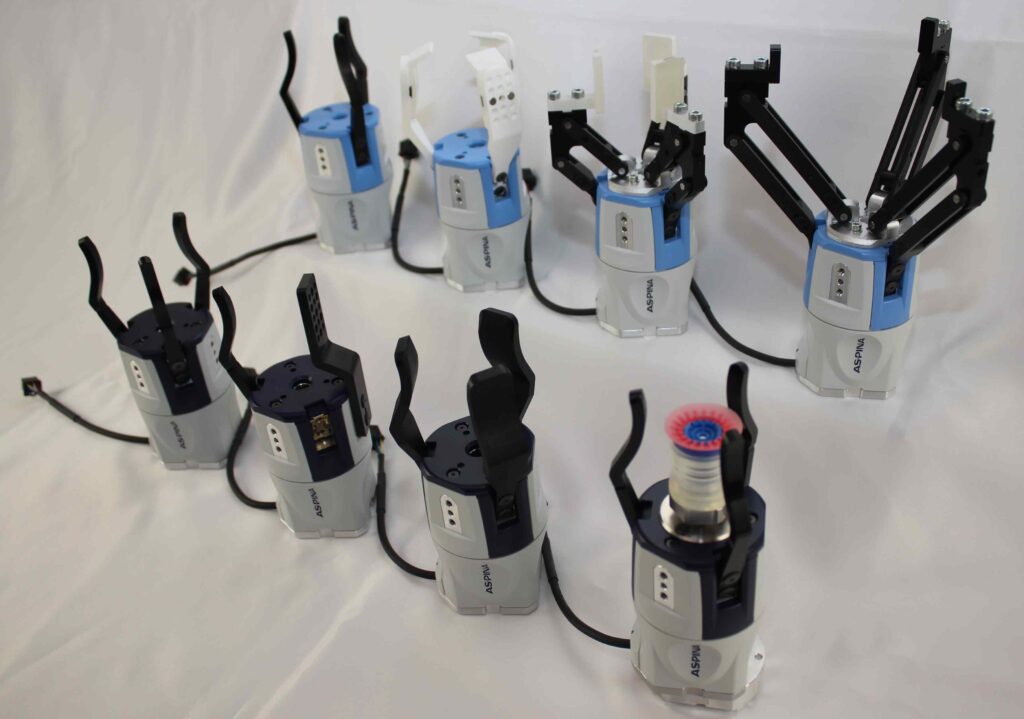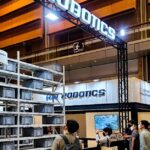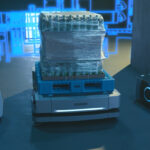ASIA ELECTRONICS INDUSTRYYOUR WINDOW TO SMART MANUFACTURING
Peripheral Equipment for Robots Keep up with Trend
The development of various peripheral devices has been accelerating, as more industrial robots are being employed in manufacturing sites. Various peripheral devices, such as robot hands, grippers, and robot wears have emerged for specific functions.
Electric Grippers
Yamaha Motor Co., Ltd. has expanded its lineup of industrial robots, primarily compact robots, including vertical articulated robots, horizontal articulated robots (SCARA robots), and single-axis robots. The company has also brought to market the YRG Series electric grippers with high-precision gripping force, position, and speed controls. It also features high affinity with horizontal articulated robots.
Robot Air Cooling Wear
THK Co., Ltd. has been expanding its robot business in both industrial robots and service robots fields. The company has also been enriching its lineup of peripheral devices. It introduced Robot Hand TRX, a controller-integrated general-purpose gripper, and Profiling Hand Unit, a compact robot hand that supports works of various shapes and materials.
In partnership with Mizuno Corporation, the company has developed AiRY JACKET, an air-cooling wear exclusively for humanoid service robots. A compact intake fan is equipped at the end of the arm of AiRY JACKET. It efficiently discharges heat generating from the robot’s arm motor to the wrist, maintaining the temperature of the robot about 10℃ lower than that of robots not wearing AiRY JACKET. Thus, it enables continuous operation of robots and prevent the stoppage of functions due to heat.
Three-Prong Robot Hand
Shinano Kenshi Co., Ltd., maker of ASPINA brand, entered the industrial robot field on full scale and started market offering of robot hands in 2019. It has expanded its lineup of electric three-prong robot hand products and optional products.

The company has increased its lineup of air attachments, fixed prongs, parallel link prongs, and wide prongs to expand the range of objects to be gripped and ways of gripping. These attachments and prongs are offered as optional items to the ARH350A and ARH305B electric three-prong robot hands. Shinano Kenshi released new options in July for use in unpacking, packing and shipping processes in the manufacturing and logistics industries; taking out and displaying commodities in the supermarket and convenience store industry; transfer of PET bottles in the beverage industry; transfer and assembly works at the manufacturing site; and supply of materials at resin molding manufacturers.
UR+ Products
Universal Robots A/S has been expanding Universal Robot+ (UR+) peripheral devices developed by partner companies. UR+ peripheral devices can be used in combination with the company’s collaborative robots. So far, the company has certified as UR+ products Canon Inc.’s Vision Edition-U image processing software, CKD Corporation’s pneumatic grippers, ASPINA’s electric three-prong robot hands, KOSMEK LTD.’s manual robot hand changer, SMC Corporation’s air chucks for collaborative robots, and DAIHEN Corporation’s welding systems for collaborative robots. Recently, Universal Robots has certified Robo Uni cover wear for collaborative robots developed and manufactured by Rocket Road Co., Ltd. based in Fukuoka, Japan as UR+ products.

Protective Cover
Captain Industries, Inc. based in Edogawa, Tokyo has brought to market Robosuit, a protective cover for robots from flying sparks and chemical agents. The company imports and sells machinery parts and various tools and software for industrial use from and to different countries. The company aims to sell 2,000 units of Robosuit in the first fiscal year targeting automakers and manufacturing (monodzukuri) companies installing industrial robots. Robosuit has been developed by U.S.-based Roboworld and Roboworld Molded Products, LLC.
Through its long years of research, Roboworld has developed cutting methods that suit the adopted materials. It also studied movements of robots. Since then, it has been manufacturing covers to protect industrial robots.




